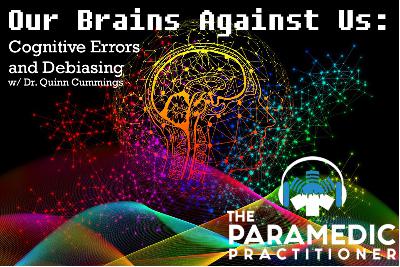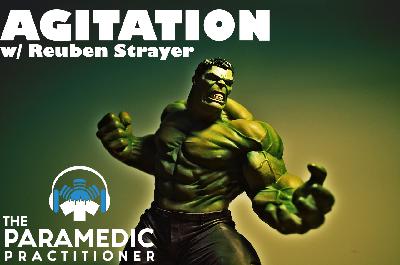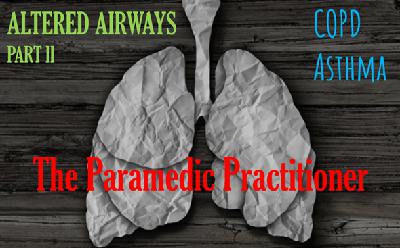SVT is Not a Rhythm
Update: 2019-10-11 1
1
Description
<figure class="wp-block-image"> <figcaption>http://www.cmaj.ca/content/188/17-18/E466</figcaption></figure>
<figcaption>http://www.cmaj.ca/content/188/17-18/E466</figcaption></figure>
<figure class="wp-block-image"> <figcaption>Mechanism of Slow-Fast AVNRT
<figcaption>Mechanism of Slow-Fast AVNRT
http:// https://litfl.com/supraventricular-tachycardia-svt-ecg-library/</figcaption></figure>
<figure class="wp-block-image"> <figcaption>AVNRT versus AVRT
<figcaption>AVNRT versus AVRT
http:// https://litfl.com/supraventricular-tachycardia-svt-ecg-library/</figcaption></figure>
<figure class="wp-block-image"> <figcaption>Sinus tachycardia with P waves at the end of the T-wave. Theses can be less obvious and the EKG can be mistaken for AVNRT or AVRT
<figcaption>Sinus tachycardia with P waves at the end of the T-wave. Theses can be less obvious and the EKG can be mistaken for AVNRT or AVRT
http:// https://litfl.com/sinus-tachycardia-ecg-library/</figcaption></figure>
<figure class="wp-block-image"> <figcaption>Atrial fibrillation with rapid ventricular response. Not the lack of visible P waves and irregularity that make the diagnosis.
<figcaption>Atrial fibrillation with rapid ventricular response. Not the lack of visible P waves and irregularity that make the diagnosis.
http:// https://litfl.com/atrial-fibrillation-ecg-library/</figcaption></figure>
<figure class="wp-block-image"> <figcaption>Atrial flutter with 2:1 conduction. Rate of 150 and fairly obvious flutter waves are present.</figcaption></figure>
<figcaption>Atrial flutter with 2:1 conduction. Rate of 150 and fairly obvious flutter waves are present.</figcaption></figure>
<figure class="wp-block-image"> <figcaption>Atrial flutter with 2:1 conduction. Flutter waves are not overtly obvious, but the rate of 150 bpm helps suggest atrial flutter. Treatment with diltiazem will slow conduction and help reveal the flutter waves and treat the rate.</figcaption></figure>
<figcaption>Atrial flutter with 2:1 conduction. Flutter waves are not overtly obvious, but the rate of 150 bpm helps suggest atrial flutter. Treatment with diltiazem will slow conduction and help reveal the flutter waves and treat the rate.</figcaption></figure>
<figure class="wp-block-image"> <figcaption>Atrial flutter with 1:1 conduction. The rate of 300 and regularity of QRS complexes helps confirm the diagnosis.
<figcaption>Atrial flutter with 1:1 conduction. The rate of 300 and regularity of QRS complexes helps confirm the diagnosis.
http:// https://litfl.com/atrial-flutter-ecg-library/</figcaption></figure>
<figure class="wp-block-image"> <figcaption>AVNRT. A regular, narrow-complex tachycardia without obvious P-waves.
<figcaption>AVNRT. A regular, narrow-complex tachycardia without obvious P-waves.
http:// https://litfl.com/supraventricular-tachycardia-svt-ecg-library/</figcaption></figure>
<figure class="wp-block-image"> <figcaption>AVRT in a patient with WPW. A regular, narrow-complex tachycardia without obvious P-waves.
<figcaption>AVRT in a patient with WPW. A regular, narrow-complex tachycardia without obvious P-waves.
http:// https://litfl.com/pre-excitation-syndromes-ecg-library/</figcaption></figure>
<figure class="wp-block-image"> <figcaption>Junctional tachycardia. Retrograde P-waves are obvious before the QRS complexes but they are not always visible.
<figcaption>Junctional tachycardia. Retrograde P-waves are obvious before the QRS complexes but they are not always visible.
<a href="http:// https://litfl.com/accelerated-junction
 <figcaption>http://www.cmaj.ca/content/188/17-18/E466</figcaption></figure>
<figcaption>http://www.cmaj.ca/content/188/17-18/E466</figcaption></figure><figure class="wp-block-image">
 <figcaption>Mechanism of Slow-Fast AVNRT
<figcaption>Mechanism of Slow-Fast AVNRThttp:// https://litfl.com/supraventricular-tachycardia-svt-ecg-library/</figcaption></figure>
<figure class="wp-block-image">
 <figcaption>AVNRT versus AVRT
<figcaption>AVNRT versus AVRThttp:// https://litfl.com/supraventricular-tachycardia-svt-ecg-library/</figcaption></figure>
<figure class="wp-block-image">
 <figcaption>Sinus tachycardia with P waves at the end of the T-wave. Theses can be less obvious and the EKG can be mistaken for AVNRT or AVRT
<figcaption>Sinus tachycardia with P waves at the end of the T-wave. Theses can be less obvious and the EKG can be mistaken for AVNRT or AVRThttp:// https://litfl.com/sinus-tachycardia-ecg-library/</figcaption></figure>
<figure class="wp-block-image">
 <figcaption>Atrial fibrillation with rapid ventricular response. Not the lack of visible P waves and irregularity that make the diagnosis.
<figcaption>Atrial fibrillation with rapid ventricular response. Not the lack of visible P waves and irregularity that make the diagnosis.http:// https://litfl.com/atrial-fibrillation-ecg-library/</figcaption></figure>
<figure class="wp-block-image">
 <figcaption>Atrial flutter with 2:1 conduction. Rate of 150 and fairly obvious flutter waves are present.</figcaption></figure>
<figcaption>Atrial flutter with 2:1 conduction. Rate of 150 and fairly obvious flutter waves are present.</figcaption></figure><figure class="wp-block-image">
 <figcaption>Atrial flutter with 2:1 conduction. Flutter waves are not overtly obvious, but the rate of 150 bpm helps suggest atrial flutter. Treatment with diltiazem will slow conduction and help reveal the flutter waves and treat the rate.</figcaption></figure>
<figcaption>Atrial flutter with 2:1 conduction. Flutter waves are not overtly obvious, but the rate of 150 bpm helps suggest atrial flutter. Treatment with diltiazem will slow conduction and help reveal the flutter waves and treat the rate.</figcaption></figure><figure class="wp-block-image">
 <figcaption>Atrial flutter with 1:1 conduction. The rate of 300 and regularity of QRS complexes helps confirm the diagnosis.
<figcaption>Atrial flutter with 1:1 conduction. The rate of 300 and regularity of QRS complexes helps confirm the diagnosis.http:// https://litfl.com/atrial-flutter-ecg-library/</figcaption></figure>
<figure class="wp-block-image">
 <figcaption>AVNRT. A regular, narrow-complex tachycardia without obvious P-waves.
<figcaption>AVNRT. A regular, narrow-complex tachycardia without obvious P-waves.http:// https://litfl.com/supraventricular-tachycardia-svt-ecg-library/</figcaption></figure>
<figure class="wp-block-image">
 <figcaption>AVRT in a patient with WPW. A regular, narrow-complex tachycardia without obvious P-waves.
<figcaption>AVRT in a patient with WPW. A regular, narrow-complex tachycardia without obvious P-waves.http:// https://litfl.com/pre-excitation-syndromes-ecg-library/</figcaption></figure>
<figure class="wp-block-image">
 <figcaption>Junctional tachycardia. Retrograde P-waves are obvious before the QRS complexes but they are not always visible.
<figcaption>Junctional tachycardia. Retrograde P-waves are obvious before the QRS complexes but they are not always visible.<a href="http:// https://litfl.com/accelerated-junction
Comments
In Channel















